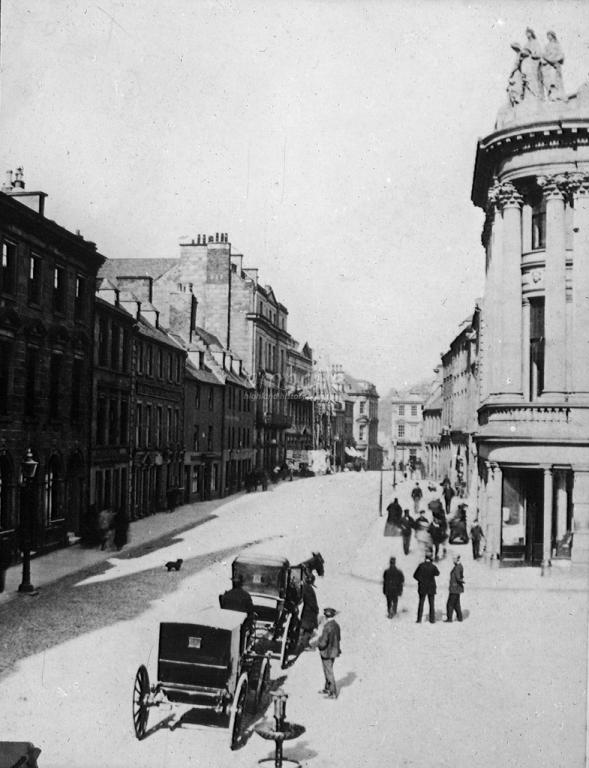
Photograph of Inverness High Street, 1870
By Caitlin Jackson
This photograph and the struggle it encapsulates, are central to the what the Highlands is today, balancing the modern with the traditional and the romantic with the practical.
Tourism is one of the most important industries in the Scottish Highlands and has been for centuries.
This photograph of Inverness High Street has been dated to 1870 and shows the building that once housed Grant's Tartan & Tweed Warehouse. This is one of several businesses that arose as a consequence of the boom in tourism to the Highlands that developed over the course of the nineteenth century. This boom is usually attributed to the improving and expanding rail network that was being established during this period. This allowed for cheaper and safer travel, which attracted visitors from across the British Isles. With this increase in visitor numbers, an industry dedicated to meeting the demands of this multitude began to develop.
 Image provided by Am Baile/Inverness Museum and Art Gallery
Image provided by Am Baile/Inverness Museum and Art Gallery
Photograph of Inverness High Street, taken in 1870.
The unique circumstances of nineteenth century created a society reeling from the rapid social and environmental changes of the industrial revolution. The Scottish Highlands came to be romanticised as an escape to tradition and more 'simple' ways of life. The business that developed in the wake of this, such as Grant's could deliberately lean into this idea by creating a poetic vision of rural paradise, complete with costume, for these visitors to escape the reality of the new social order. This meant that presenting this wild and romantic vison of the Scottish Highlands increasingly required the modernisation and in some cases industrialisation, that visitors sought to escape.
This is an irony that still affects tourism today with questions of preservation versus access becoming more contentious. Ultimately though tourism is an industry that employs many people across the Highlands and is now central to its very fabric, bringing in an estimated £1.6 billion per year to the Scottish economy. This photograph and the struggle it encapsulates, are central to the what the Highlands is today, balancing the modern with the traditional and the romantic with the practical.
We Want to Hear From You!
Share your stories about the history of the Highlands and Islands
Stories are at the heart of what we do as a project and we are always looking to learn more about what the Highlands and Islands means to people who live, work, and visit here.
The history of the Highlands and Islands comes alive in photographs such as this one of Inverness High Street in 1870. Such photographs shine a light on significant historical moments and echo its consequences, such as the increase of tourism to the Highlands and Islands in this story. We would love to know, are there any photographs, art pieces, or objects you feel encapsulate the turning points in the history of the Highlands and Islands? Tell us below, we can't wait to hear from you!
Click here to share your story through our online story portal